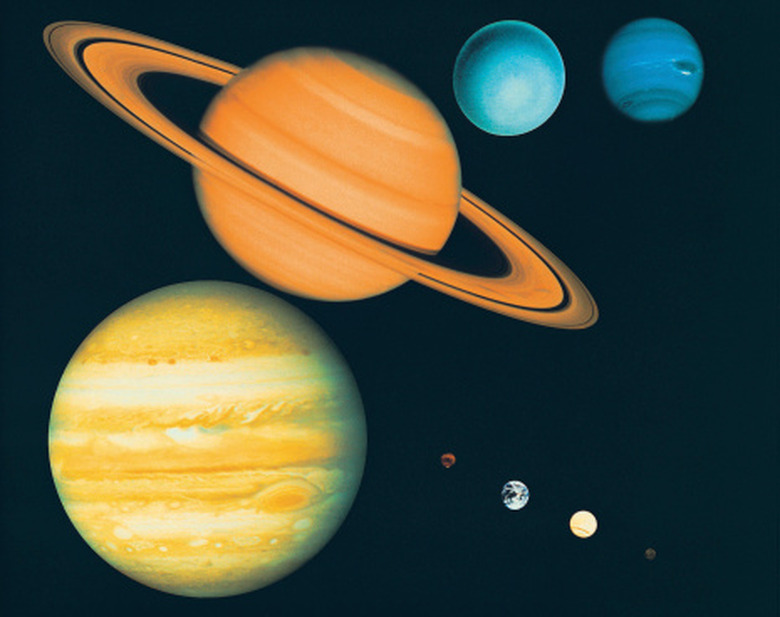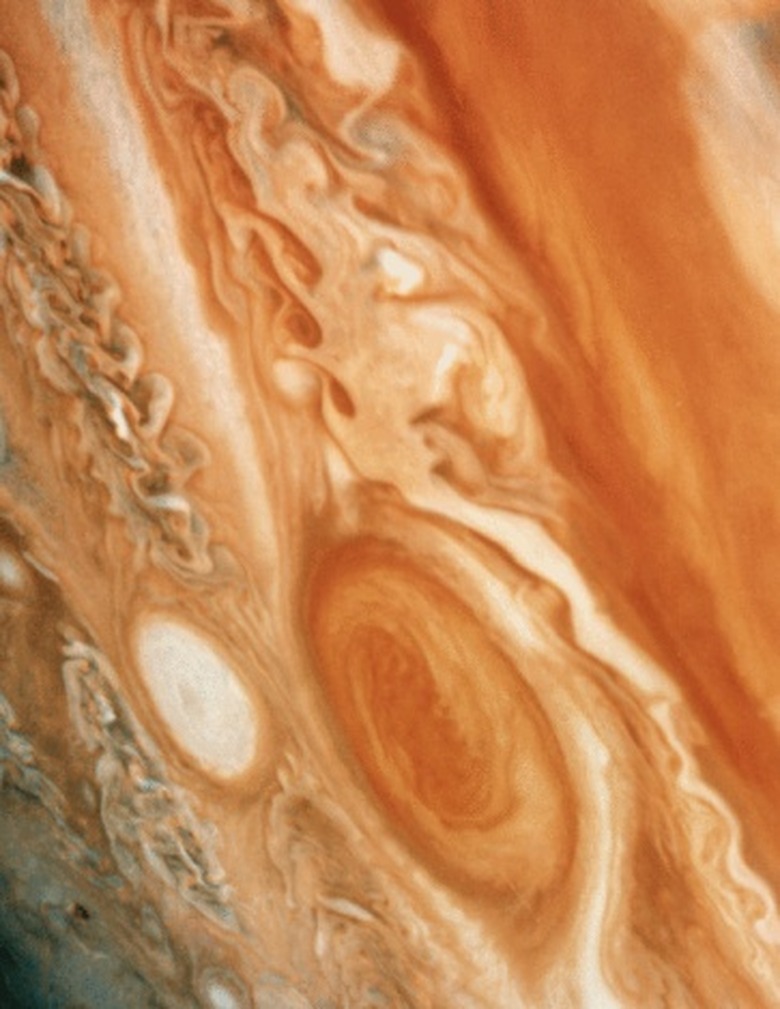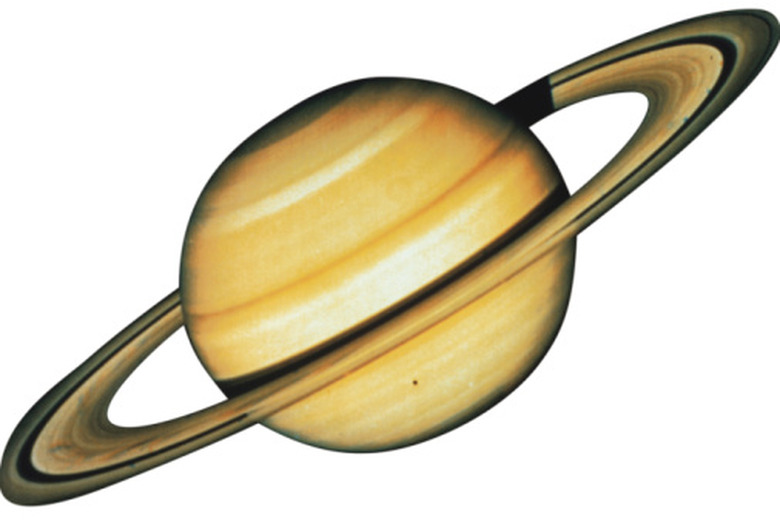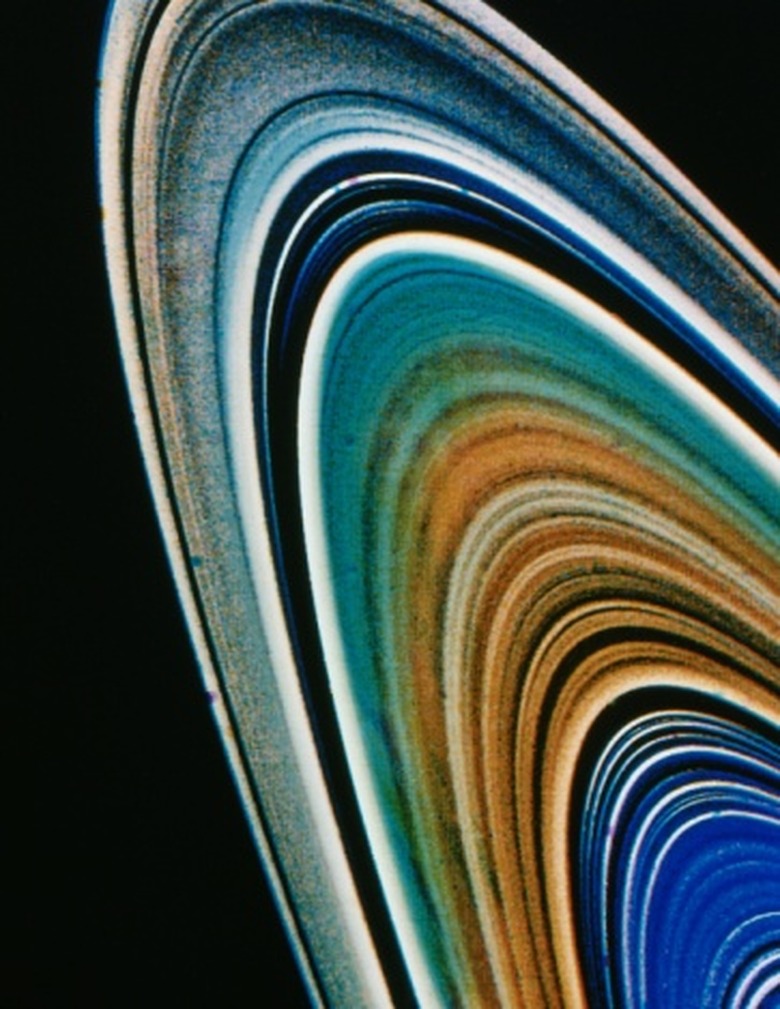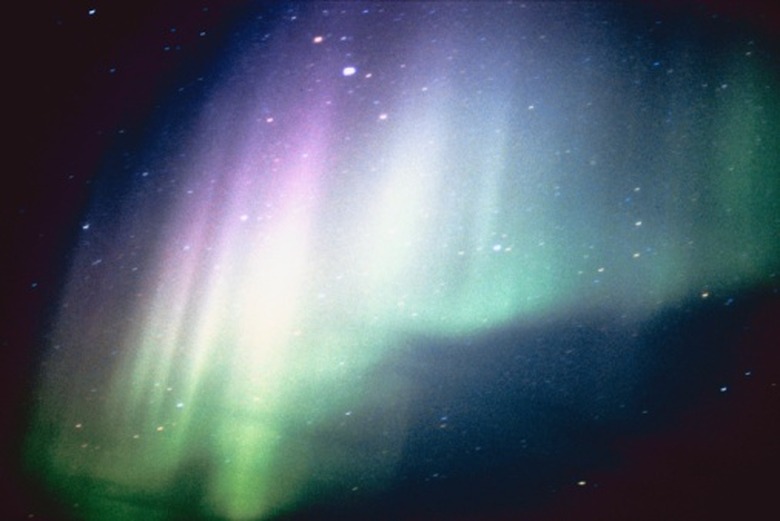Important Facts About The Outer Planets
Our solar system came into being 4.6 billion years ago, as evidenced by the dating of space rocks called meteorites. The solar system coalesced from a cloud of gas and dust particles, giving rise to the sun and the inner and outer planets. The inner planets consist of those orbiting inside the asteroid belt–Mercury, Venus, Earth and Mars. The outer, or Jovian, planets existing beyond the asteroid belt consist of Jupiter, Saturn, Uranus and Neptune. Pluto held the title of ninth planet before its reclassification in 2006 as a dwarf planet by the International Astronomical Union. Pluto may be no different from the many objects found beyond the orbit of Neptune that also revolve around the sun and modify the orbit of Neptune.
Atmosphere and Weather
Atmosphere and Weather
The Jovian planets all retain their original thick atmospheres because their gravities and low temperatures keep gas particles in their atmospheres from escaping into space. Atmospheres protect planets from the sun's harmful radiation and prevent energy from flying into space.
The Coriolis effect, resulting from a planet's rapid rotation, refers to the distribution of warm air to the pole regions, causing areas of high winds and calm. The Jovian planets all generate hurricane-like storms in response to exaggerated Coriolis effects. Astronomers have tracked the progress of long-term storms such as the Great Red Spot on Jupiter and the similar Great Dark Spot on Neptune.
Composition
Composition
The condensation model of the solar system hypothesizes that the solar system originated in a cloud of violently swirling dust and gas, with the sun forming first at the center of the mass. Heavier elements such as nickel and iron settled closer to the sun while lighter elements such as hydrogen and helium spread outward. As the elements and gases moved and collided with one another, they began clumping together. The inner planets formed from the accumulation of rocky particles and the outer from the accretion of icy matter. The inner planets retained smaller, denser cores whereas the outer planets possessed larger cores containing little metal or rock. The intense gravities of the larger planets continued to capture stray gases to form thick, gaseous or icy atmospheres.
Density
Density
A planet's density–the ratio of an object's mass to its volume–reflects its composition; metals and rocks compose the denser inner planets while ices and gases make up the outer planets. Scientists measure the density of the earth to be 5.52 grams per cubic centimeter, compared to the density of water at 1 gram per cubic cm. The inner planets all have densities comparable to that of earth. The Jovian planets, with their ice and gas interiors, have densities closer to that of water. Saturn boasts a density less than water.
Rings
Rings
All Jovian planets exhibit ring systems, although Saturn's dwarfs the others. Galileo first observed the rings of Saturn in 1610. At first, astronomers thought that Saturn had three rings; however, modern-day exploration of the rings by the Voyager missions revealed that the three rings actually comprise hundreds of smaller rings made of unknown particles and frozen water. The rings of Jupiter and Uranus appear dark, possibly because they contain no ice, which reflects light. A very thin ring or partial ring may surround Neptune. The disintegration of satellites or asteroids that had drifted too close to a planet may explain the existence of planetary rings.
Satellites
Satellites
Unlike the inner planets that have relatively few natural satellites, the Jovian planets possess numerous moons. Sixty-four known moons orbit Jupiter, with Ganymede being the largest moon in the solar system, even bigger than Mercury. Saturn has 33 known moons, and one of its moons, Titan, bears an eerie resemblance to the earliest stages of earth's evolution. Uranus possesses 27 natural satellites while Neptune has 13.
Magnetic Fields
Magnetic Fields
Strong magnetic fields originate deep within the outer planets, powered by electrical currents generated by the movement of fluids, namely liquid hydrogen. The outer planets have magnetic fields many times greater than any of the inner planets, including Earth. The giant planets have pronounced magnetospheres produced by the combination of their rapid rotations and strong magnetic fields. A planet's magnetosphere defines the area around the planet that entraps particles via its magnetic field. Particles emanating from the sun–the solar wind–interact with the magnetosphere to produce brilliant light shows at the north and south poles called auroras.
References
- University of Hawaii, Institute for Astronomy: Formation of Solar Systems; Joshua E. Barnes
- Illinois State University, Department of Physics: Planetary Science, Atmosphere section 1/3 of the way down the page; Nick Strobel; February 1999
- Space Today Online: Moons of the Solar System; Anthony R. Curtis
Cite This Article
MLA
Dinh, Ho-Diep. "Important Facts About The Outer Planets" sciencing.com, https://www.sciencing.com/important-outer-planets-8339068/. 24 April 2017.
APA
Dinh, Ho-Diep. (2017, April 24). Important Facts About The Outer Planets. sciencing.com. Retrieved from https://www.sciencing.com/important-outer-planets-8339068/
Chicago
Dinh, Ho-Diep. Important Facts About The Outer Planets last modified March 24, 2022. https://www.sciencing.com/important-outer-planets-8339068/
